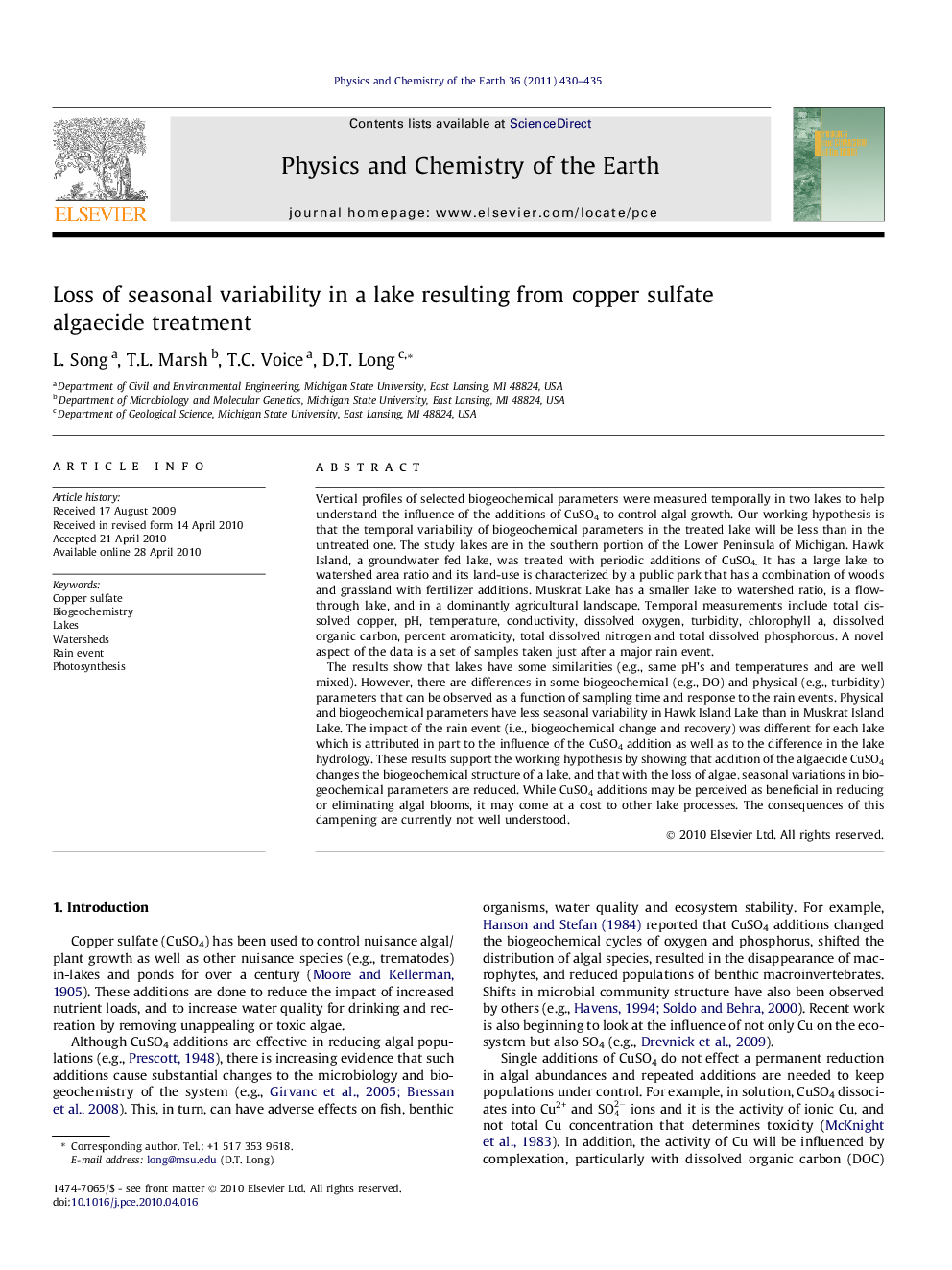| Article ID | Journal | Published Year | Pages | File Type |
|---|---|---|---|---|
| 4721358 | Physics and Chemistry of the Earth, Parts A/B/C | 2011 | 6 Pages |
Vertical profiles of selected biogeochemical parameters were measured temporally in two lakes to help understand the influence of the additions of CuSO4 to control algal growth. Our working hypothesis is that the temporal variability of biogeochemical parameters in the treated lake will be less than in the untreated one. The study lakes are in the southern portion of the Lower Peninsula of Michigan. Hawk Island, a groundwater fed lake, was treated with periodic additions of CuSO4. It has a large lake to watershed area ratio and its land-use is characterized by a public park that has a combination of woods and grassland with fertilizer additions. Muskrat Lake has a smaller lake to watershed ratio, is a flow-through lake, and in a dominantly agricultural landscape. Temporal measurements include total dissolved copper, pH, temperature, conductivity, dissolved oxygen, turbidity, chlorophyll a, dissolved organic carbon, percent aromaticity, total dissolved nitrogen and total dissolved phosphorous. A novel aspect of the data is a set of samples taken just after a major rain event.The results show that lakes have some similarities (e.g., same pH’s and temperatures and are well mixed). However, there are differences in some biogeochemical (e.g., DO) and physical (e.g., turbidity) parameters that can be observed as a function of sampling time and response to the rain events. Physical and biogeochemical parameters have less seasonal variability in Hawk Island Lake than in Muskrat Island Lake. The impact of the rain event (i.e., biogeochemical change and recovery) was different for each lake which is attributed in part to the influence of the CuSO4 addition as well as to the difference in the lake hydrology. These results support the working hypothesis by showing that addition of the algaecide CuSO4 changes the biogeochemical structure of a lake, and that with the loss of algae, seasonal variations in biogeochemical parameters are reduced. While CuSO4 additions may be perceived as beneficial in reducing or eliminating algal blooms, it may come at a cost to other lake processes. The consequences of this dampening are currently not well understood.
